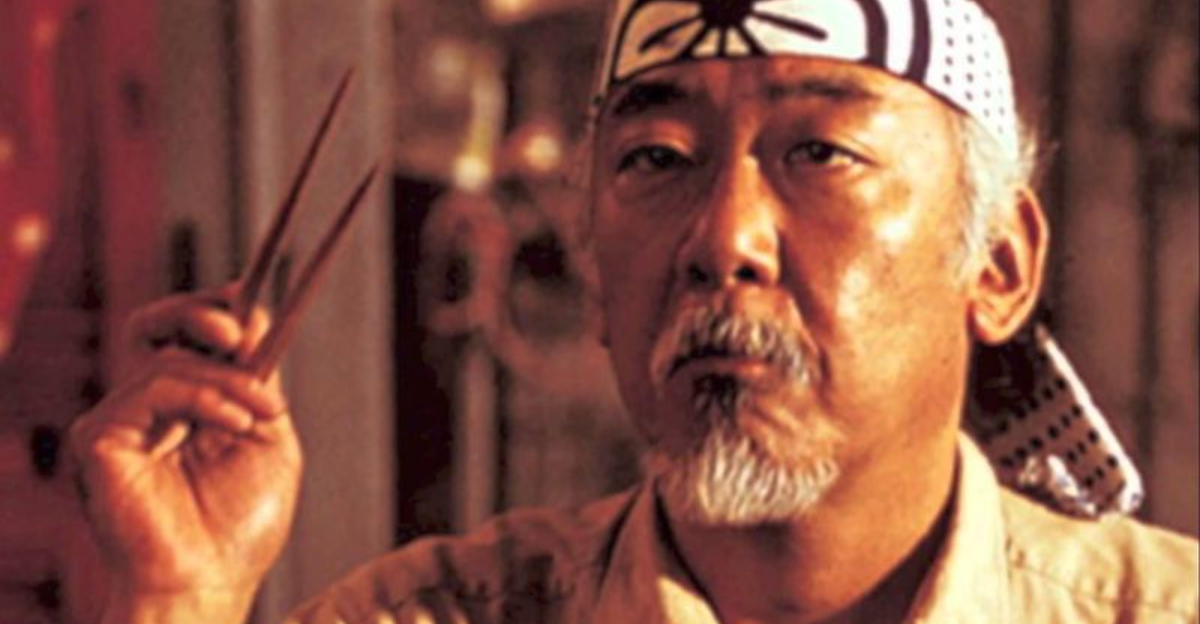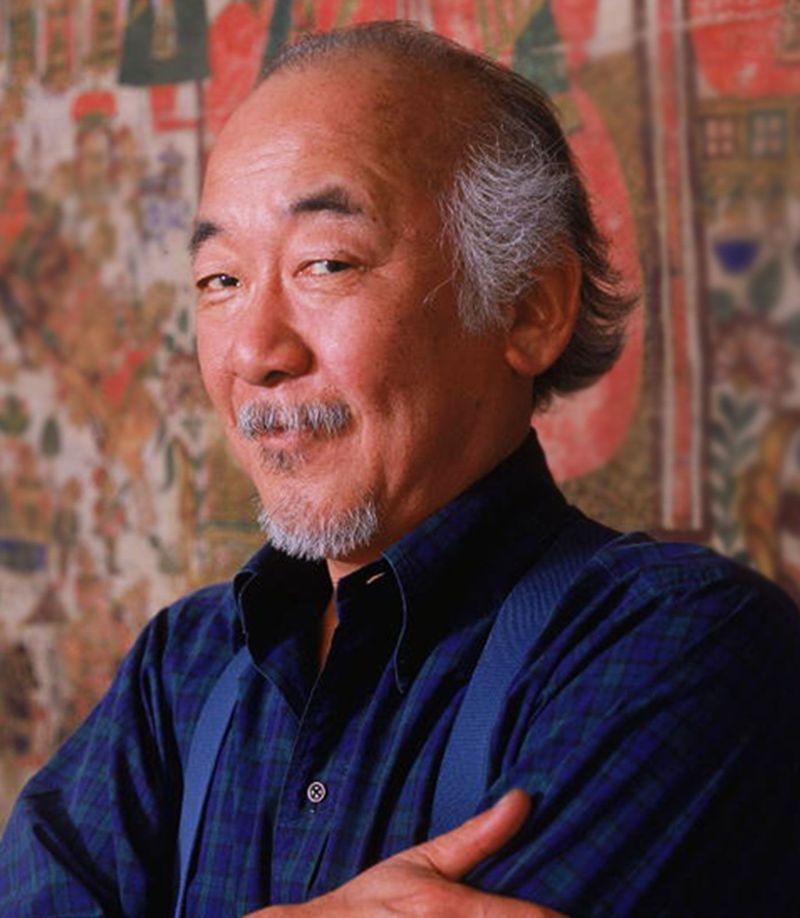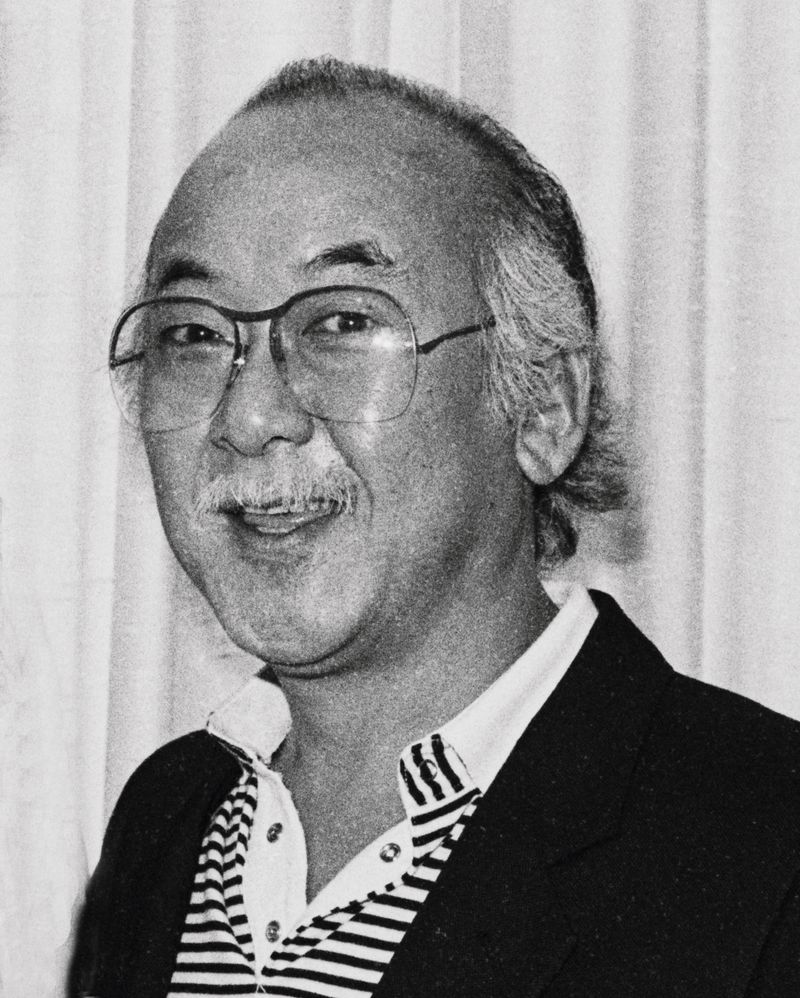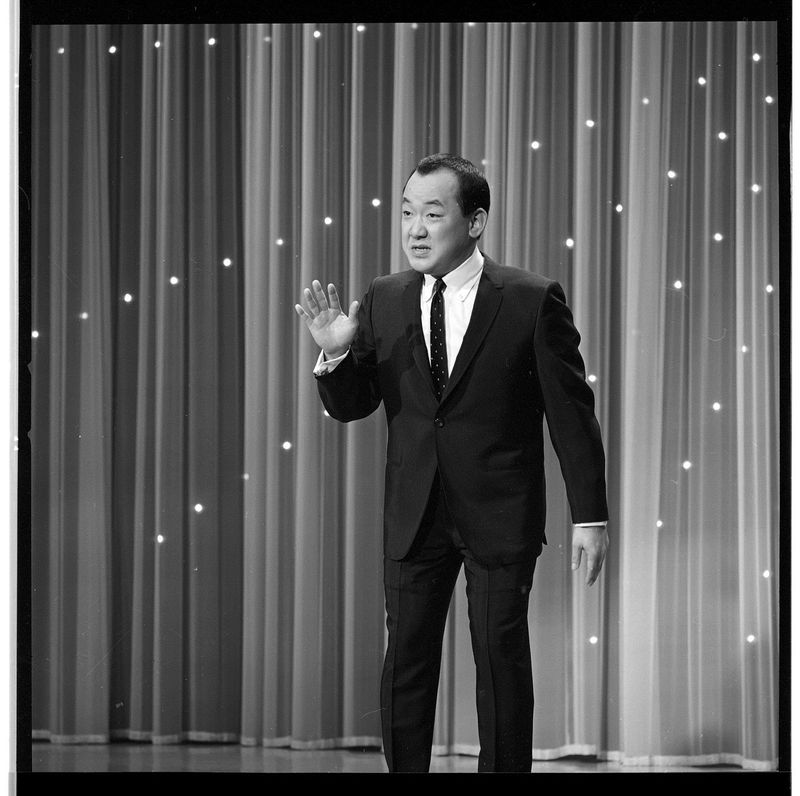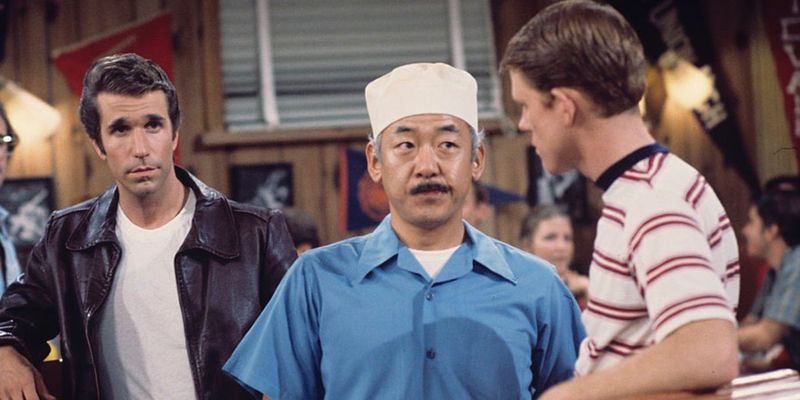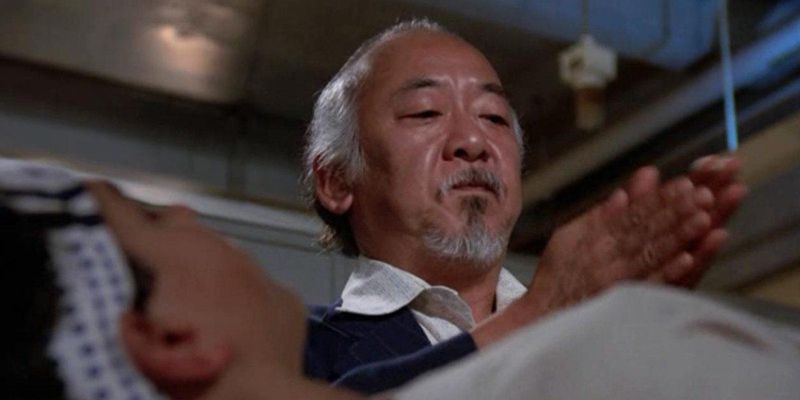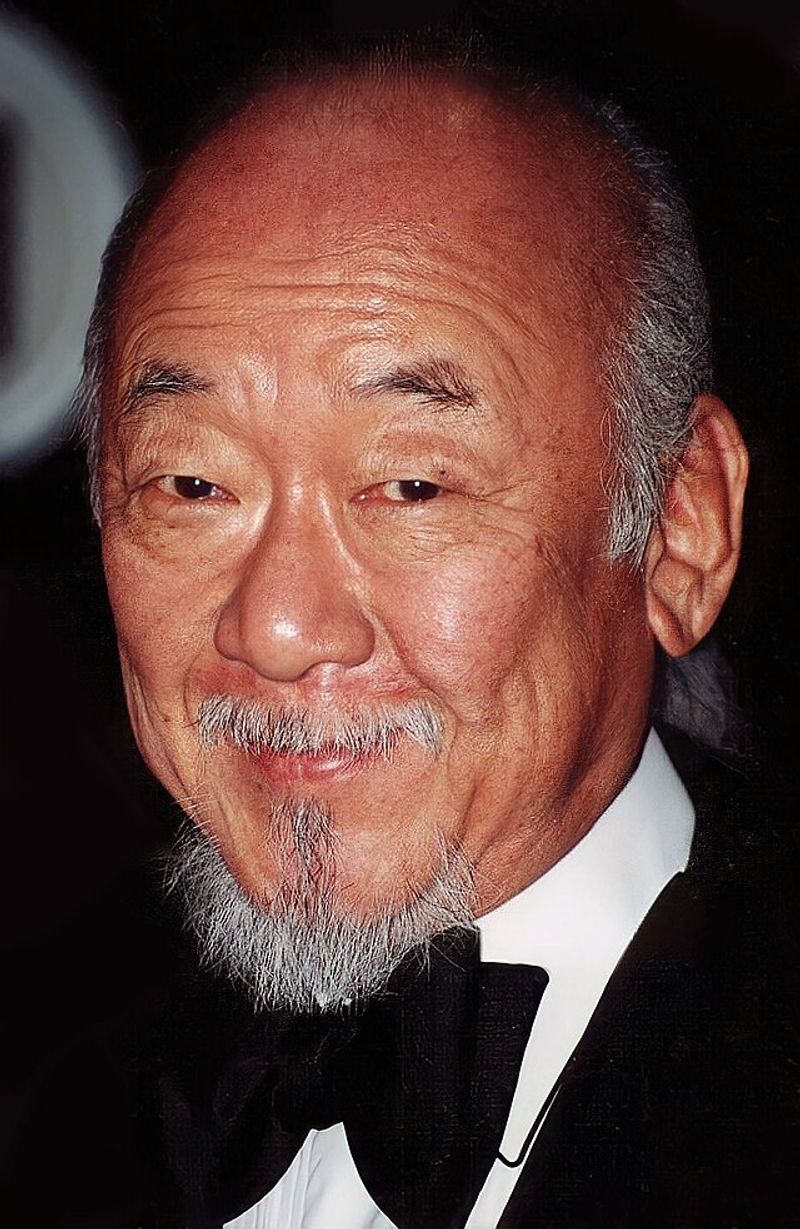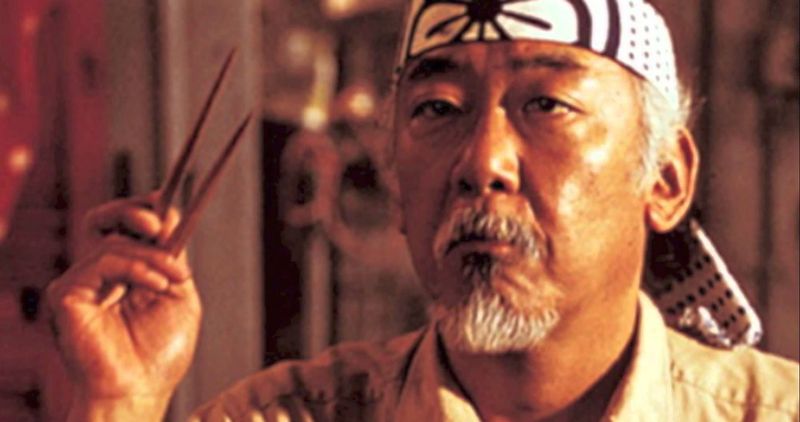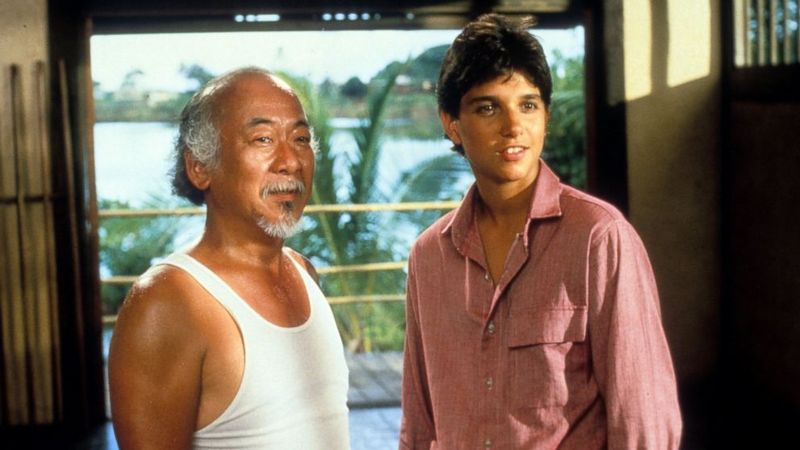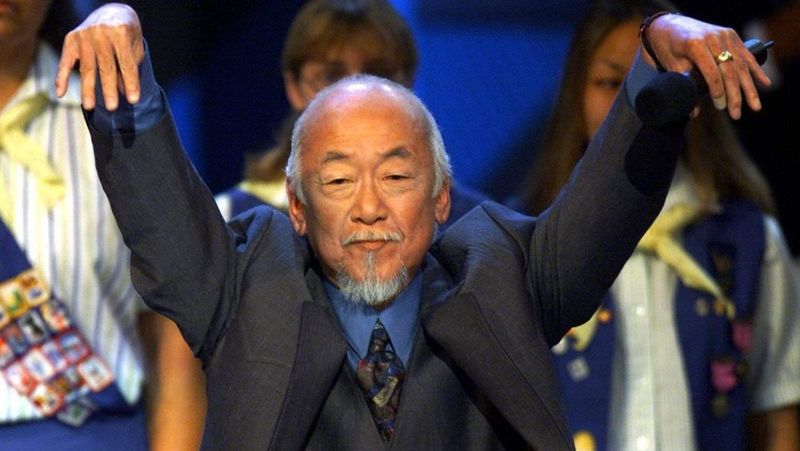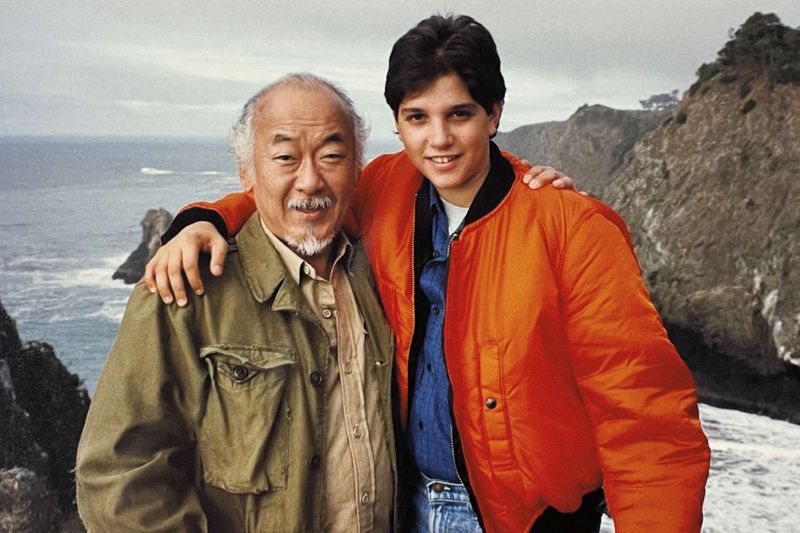When we think of The Karate Kid, the wisdom-filled Mr. Miyagi immediately comes to mind. But few know the remarkable journey of the man who brought this iconic character to life. Pat Morita overcame incredible personal struggles before becoming one of Hollywood’s most beloved mentors. His story is one of perseverance, breaking barriers, and leaving an enduring mark on film history.
1. Born Noriyuki Morita
Before he became known worldwide as Pat, he entered this world as Noriyuki Morita on June 28, 1932, in California’s Sacramento Valley. His parents, Japanese immigrants who worked the farmlands, couldn’t have imagined their son’s future impact on American culture.
The name “Pat” came much later when he entered showbiz, adopting a more American-sounding stage name to navigate Hollywood’s barriers. Despite this professional concession, he proudly used his birth name in formal credits later in his career, including for his Oscar-nominated role in The Karate Kid.
2. Childhood Health Struggle
Imagine spending your childhood confined to hospital beds instead of playgrounds. At age two, Morita contracted spinal tuberculosis, a devastating diagnosis that forced him into a full-body plaster cast for nearly nine years of his young life.
Doctors delivered the crushing news that he might never walk again. Against these bleak odds, Morita’s indomitable spirit emerged early. Learning to walk at age 11 after countless surgeries and treatments, he took his first steps with leg braces and crutches—foreshadowing the resilience that would define his life journey.
3. Internment Camp Survivor
Fresh from his hospital recovery, 11-year-old Morita faced another trial when his family was forced into the Gila River War Relocation Center in Arizona. Executive Order 9066 had mandated the internment of Japanese Americans following Pearl Harbor—regardless of their loyalty or citizenship.
Behind barbed wire, surrounded by armed guards and watchtowers, young Noriyuki witnessed firsthand the painful contradiction of American ideals. This formative experience shaped his worldview and later artistic choices.
After the war, his family, like many Japanese Americans, had to rebuild their lives from scratch, having lost their property and livelihoods.
4. Comedy Career Beginnings
Long before becoming the sage Mr. Miyagi, Morita honed his comedic timing in smoky nightclubs across America. Billing himself as “The Hip Nip,” he crafted a stand-up routine that daringly addressed racial stereotypes through humor during the turbulent 1960s.
Working alongside contemporaries like Steve Martin and Richard Pryor, Morita developed his distinctive voice in comedy. His nightclub act caught the attention of talent scouts, eventually leading to guest spots on popular TV shows.
This comedy background, seemingly at odds with his later dramatic success, actually provided the perfect foundation for the subtle humor that made Mr. Miyagi so endearing.
5. Groundbreaking TV Role
“Happy days” took on new meaning when Morita stepped into the role of Arnold Takahashi, owner of the drive-in diner where Richie Cunningham and the gang hung out. His catchphrase—”Hello, buckaroos!”—became a fan favorite in living rooms across America.
As one of the first Asian Americans to secure a recurring role on mainstream television, Morita quietly pioneered representation. Though initially appearing in just a handful of episodes, audience response was so positive that producers brought him back repeatedly.
Arnold’s character avoided the painful stereotypes common in that era, presenting instead a good-natured businessman who was very much part of the American fabric.
6. The Mr. Miyagi Audition Battle
Hollywood executives initially balked at casting the “Happy Days comedian” as the serious martial arts master in The Karate Kid. “Too funny” was their verdict, failing to see beyond Morita’s comedic persona to his dramatic potential.
Director John Avildsen championed Morita, allowing him a screen test that silenced the doubters. Arriving at the audition in character—complete with accent and mannerisms—Morita delivered such a compelling performance that producers immediately reversed course.
This pivotal moment almost never happened; Morita nearly skipped the audition, believing he wouldn’t be taken seriously. His persistence changed film history and his own legacy forever.
7. Creating Miyagi’s Distinctive Voice
Miyagi’s unforgettable speech pattern wasn’t pulled from a scriptwriter’s imagination—it was Morita’s personal creation. Drawing inspiration from his own uncle’s cadence and manner of speaking, he crafted a voice that conveyed wisdom without caricature.
Few viewers realized that off-camera, Morita spoke perfect, unaccented English. His commitment to authenticity meant studying the specific dialect of Okinawa, where Miyagi’s character originated.
Morita walked a delicate line, ensuring Miyagi’s speech pattern felt genuine rather than mocking. This attention to detail transformed what could have been a stereotype into one of cinema’s most respected mentor characters.
8. Oscar Recognition
The 1985 Academy Awards marked a watershed moment when Morita’s name echoed through the Dorothy Chandler Pavilion as a Best Supporting Actor nominee. His portrayal of Mr. Miyagi had transcended genre boundaries, earning recognition from an institution not known for honoring martial arts films.
Though he didn’t take home the statue (which went to Haing S. Ngor for The Killing Fields), the nomination itself shattered barriers. As only the fourth Asian American actor ever nominated in any category, Morita’s achievement opened doors for future generations.
His fellow nominees that year included Ralph Richardson and John Malkovich—testament to how thoroughly Morita had established himself among acting’s elite.
9. Cultural Ambassador Through Film
Miyagi’s bonsai trees, meditation practices, and Okinawan heritage introduced millions of Americans to Japanese cultural elements they might never have encountered otherwise. Morita approached this responsibility with profound respect, insisting on cultural accuracy whenever possible.
The famous “catch fly with chopsticks” scene became shorthand for Eastern philosophical concepts in Western pop culture. Behind these now-iconic moments was Morita’s commitment to representing his heritage with dignity.
Through subtle choices in movement, speech and character development, he created a Japanese character who defied Hollywood’s long history of Asian stereotypes—educating audiences while entertaining them.
10. The Karate Kid Franchise Legacy
Miyagi’s wisdom extended far beyond the original film, with Morita reprising his role across three sequels spanning a decade. Each installment revealed new layers to the character—from his heartbreaking wartime past to his own youthful struggles with balance.
The second film took audiences to Okinawa, exploring Miyagi’s roots and unresolved personal conflicts. By the time The Next Karate Kid paired him with a young Hilary Swank in 1994, Morita had cemented Miyagi as one of cinema’s greatest mentors.
What made his achievement remarkable was maintaining the character’s integrity and depth across multiple films when sequels often diminish iconic characters.
11. Fighting Hollywood Stereotypes
Throughout his five-decade career, Morita navigated an industry that routinely limited Asian actors to servant roles, villains, or comic relief. His success came despite these barriers, not because the system welcomed diversity.
“I’ve played Japanese, Chinese, Korean, Vietnamese—and never once played my own ethnicity,” he once remarked about Hollywood’s tendency to view all Asian identities as interchangeable. After Miyagi’s success, Morita still found himself offered primarily one-dimensional roles.
His persistence in seeking authentic representation made him a quiet pioneer. Each role he elevated through his talent helped reshape industry perceptions about what Asian American actors could portray.
12. Voice Acting Versatility
The Emperor’s authoritative voice in Disney’s animated hit “Mulan” introduced Morita to an entirely new generation in 1998. Children who had never seen The Karate Kid recognized his distinctive vocal talents as he brought dignity to another significant Asian character.
Beyond Disney, his voice enlivened numerous animated series including “The Real Ghostbusters” and “Avatar: The Last Airbender.” Animation freed Morita from the physical typecasting that often limited his on-screen roles.
Few fans realize the extent of his voice acting portfolio, which spans dozens of productions. This less visible aspect of his career demonstrates his remarkable range as a performer beyond his signature live-action role.
13. Personal Struggles With Addiction
Behind the wise screen persona lurked demons that Morita battled throughout his adult life. Alcoholism, a struggle he eventually discussed openly, complicated both his career and personal relationships over many decades.
His battle with addiction began in his nightclub days, where drinking culture permeated the comedy scene. Despite periods of sobriety, the disease repeatedly pulled him back—a stark contrast to the centered discipline of his most famous character.
Friends noted the painful irony that the man who portrayed wisdom and balance on screen fought so hard to find it in his personal life. His willingness to acknowledge these struggles later in life added another dimension to his legacy of honesty.
14. Final Years and Passing
November 24, 2005 marked the end of Morita’s remarkable journey when he passed away at 73 in Las Vegas. The cause—complications from kidney failure—concluded a life that had overcome seemingly insurmountable obstacles from its earliest days.
In his final years, Morita continued working steadily in film and television, completing nearly a dozen projects released after his death. Ralph Macchio, forever linked to Morita as Daniel-san, spoke touchingly about his mentor’s impact both on screen and off.
Tributes poured in from fellow actors, directors, and fans worldwide who recognized that a unique cultural bridge had been lost.
15. Continuing Influence in Cobra Kai
Mr. Miyagi’s presence looms large over Netflix’s hit series “Cobra Kai” despite Morita’s absence. His character’s teachings form the philosophical foundation for Daniel LaRusso’s approach to life and karate decades after their training together.
The show treats Miyagi’s memory with profound reverence—his portrait watches over the dojo, his belongings are treasured, and his wisdom is frequently quoted. Flashbacks incorporating footage from the original films keep Morita’s performance alive for new generations.
Cobra Kai creators have called this spiritual presence a way of honoring Morita’s legacy while acknowledging the impossibility of replacing him. The show demonstrates how truly irreplaceable both character and actor remain.
